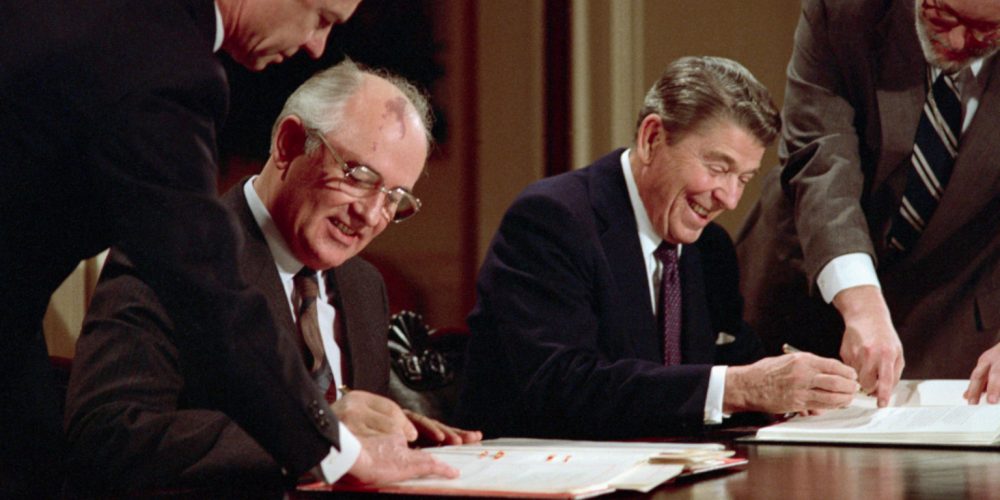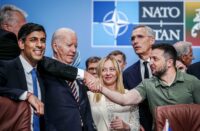Last month the United States withdrew from the Intermediate-Range Nuclear Forces [INF] Treaty, which was concluded with the Soviet Union in 1987.
That treaty was the first nuclear disarmament agreement ever to be concluded between the two countries, albeit to the disadvantage of the Soviet Union. It led to the disarmament of all ground-based missiles and cruise missiles with a flight range between 500 and 5,500 km.
The treaty was uneven. The USSR scrapped 1,754 launch ramps and dismantled 3,000 nuclear warheads, the United States 817 and 890, respectively. France and Britain kept their nuclear weapons; and the United States kept its “Star Wars” programme.
The INF Treaty prohibits the testing, production or installation of ground-based missiles on land, whether nuclear or conventional, anywhere in the world. Sea-based and air-based medium-range weapons are permitted under the treaty. Even tests with medium-range weapons are permitted on land if they are launched from permanently installed launch pads and then not stationed on land.
The implementation of the treaty and its verification were regarded as a model for subsequent disarmament treaties. In 2001, both sides agreed to discontinue controls.
Without presenting any hard evidence, the United States claims that Russia has not adhered to the treaty since 2008. On 30 November 2018 the director of the CIA, Dan Coats, accused the Russians of having launched a missile from a fixed launch pad that had flown more than 500 km, and that later it launched the same missile from a moving launch pad, which remained below the 500 km mark. Neither flight would breach the INF Treaty.
However, Coats stated that by comparing the two flights the Russian side could draw conclusions about the development of a cruise missile capable of flying more than 500 km and being launched from mobile launch pads. That would be a breach of the treaty. The United States has not presented any evidence.
The Russian side says that the cruise missile’s range is 480 km, the United States contends that it’s 2,600 km. Russia invited the United States and NATO to make an on-the-spot inspection, which they rejected. The United States claims that Russia stationed a hundred of these missiles in four battalions and demands that they be scrapped. But how can Russia scrap something it does not possess?
In reality, the United States is seeking a way out of the INF Treaty, so that it would have a free hand to deploy land-based missiles and cruise missiles capable of carrying either nuclear or conventional warheads. The latter could also destroy very precisely bunkered and other targets.
Since 2006 US governments have been pursuing the technological goal of “prompt global strike”—being able to attack anywhere in the world within an hour. The aim is to create blackmail on a global scale. This inevitably increases the risks. Its 625 military bases outside the United States, in 53 countries, mainly on the Eurasian landmass within reach of Russia and China, could be used as sites for new medium-range weapons. This would allow it to set up medium-range weapon systems near the Chinese border and also along the Russian border.
In Europe the United States can station conventionally equipped medium-range weapons in the new NATO states. The NATO-Russia treaty of 1997 forbids the stationing of nuclear weapons in those countries; but nuclear medium-range systems could, of course, be re-established in western Germany.
It is clear that the closer to the Russian border American missiles are stationed, the shorter the warning time and thus the possibility of a catastrophic accident. In addition, Trump wants to build a missile defence throughout the globe and including space.
The People’s Republic of China is in his sights. China has a large number of medium-range missiles to keep at bay the US war fleet on its doorstep. Trump wants China to dismantle this arsenal. If it doesn’t do this voluntarily, then the United States will arm itself massively in the region.
The INF Treaty prevents him from doing so. Without the treaty he can target other countries too that are pursuing a course that is independent of the United States: North Korea, Cuba, Iran, and Venezuela.






